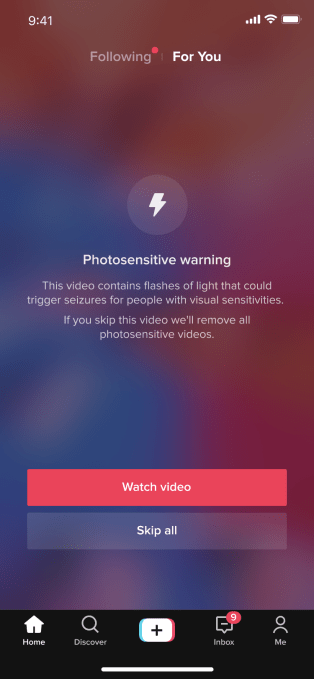TikTok announced today it is rolling out a new feature that will allow people with photosensitive epilepsy to automatically skip videos that can trigger seizures.
The “Skip All” option will be introduced to all users over the next few weeks and comes a few months after TikTok began automatically warning creators if a video contains effects, like flashing lights or certain visual patterns, that can be harmful to people with photosensitive epilepsy. If they upload those videos, TikTok automatically prefaces them with a warning screen.
Once a user turns on the “Skip All” option, they won’t see any videos TikTok has identified as potential triggers.
According to the Epilepsy Foundation, one of several organizations TikTok consulted with, the condition affects about 65 million people worldwide.
While advocates have called on social media platforms, including YouTube and Facebook, to place warnings before content with potential triggers, the task often falls to individual creators. For example, if a video has flashing lights, they might mention that at the beginning or in its description. But not all creators are aware of photosensitive epilepsy or its triggers.
Furthermore, online trolls have posted harmful content on purpose, sometimes tagging them with keywords related to epilepsy. The Epilepsy Society, another organization that worked with TikTok, has called for malicious posts to be covered by the United Kingdom’s Online Harms bill.
In a statement published with TikTok’s announcement, Nicola Swanborough, the Epilepsy Society’s acting head of external affairs, said “social media can be a lifeline for many people with epilepsy, allowing them to connect with others with the condition from around the world,” and that the organization hopes “other platforms will follow TikTok’s lead in ensuring greater inclusivity.”
from TechCrunch https://ift.tt/36WIgOo
via IFTTT

Comments
Post a Comment